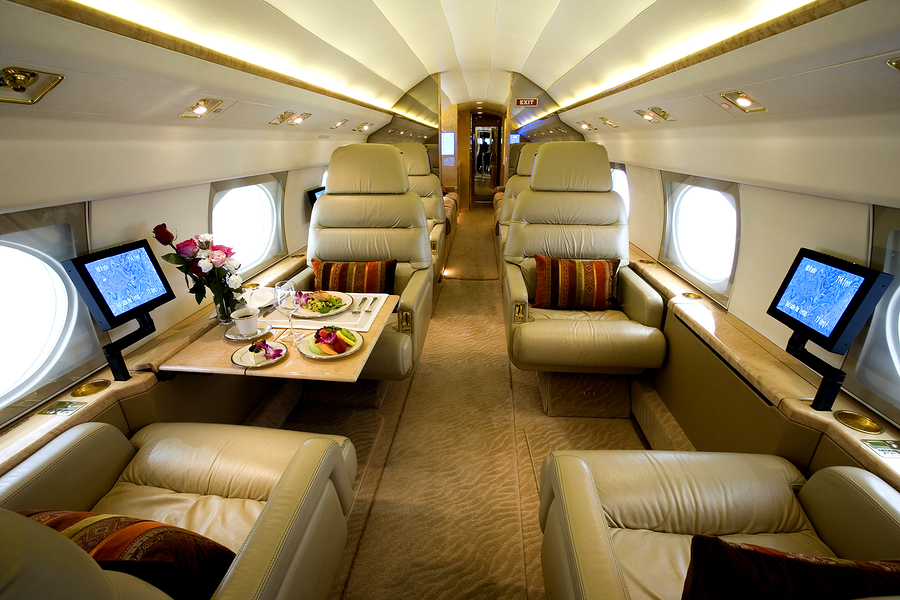The clock is ticking for thousands of aircraft in the United States that have not yet gotten the necessary upgrades to meet the compliance standards of Automatic Dependent Surveillance-Broadcast (ADS-B), a new surveillance technology used for air traffic control. The January 2020 deadline is fast-approaching, but many aircraft owners are unsure of whether to make the leap.
The cost of upgrading to meet the new program’s standards can be steep, particularly for older aircraft that lack much of today’s modern tracking technology. Few options for selling jets and values that sit far below the cost of compliance may force many jet owners to retire their aircraft.
What is ADS-B?
ADS-B is a new air traffic surveillance system implemented by the Federal Airline Administration (FAA) to replace radar technology. The system has been designed to improve safety and efficiency in the air, reduce costs, and minimize the environmental impacts of flying. ADS-B is the FAA’s attempt to modernize air traffic control and improve the safety of pilots and their passengers.
Beginning January 2020, all aircraft must be equipped with ADS-B Out systems to fly in most controlled airspace. ADS-B Out provides the ability to transmit flight data to air traffic controllers and other aircraft equipment with ADS-B In, the counterpart system.
ADS-B In is not required for compliance, but the FAA encourages it to allow pilots to utilize all the benefits of the system, including weather and traffic pattern updates.

Options for owners
Although upgraded tracking systems stand to benefit the aviation industry, the FAA-mandated compliance requirements are troublesome to many aircraft owners, particularly those who own smaller aircraft such as private jets.
Cost is the major issue. For older aircraft with outdated systems, the cost of upgrading to ADS-B standards could cost owners $90,000 or more. This cost includes the need for new transponders, GPS receivers, antennas and other equipment. Newer jets may be able to trim these costs significantly, but the expense may still outweigh the value of some smaller jets. Downtime expenses are also a factor for jet owners that lease their aircraft out as a revenue stream.
 The cost of not upgrading may be just as steep. Without being ADS-B compliant, aircraft will not be allowed to fly in controlled airspace. This puts a damper on many aircraft and their capabilities. If jets need to fly into this airspace regularly, the owners face a difficult choice: upgrade or retire.
The cost of not upgrading may be just as steep. Without being ADS-B compliant, aircraft will not be allowed to fly in controlled airspace. This puts a damper on many aircraft and their capabilities. If jets need to fly into this airspace regularly, the owners face a difficult choice: upgrade or retire.
Selling old aircraft at this time isn’t easy. With the FAA deadline looming over their heads, aircraft buyers are thinking to the future and purchasing already compliant aircraft. This leaves aircraft owners with the option to scrap their jets to earn back some of their investment.
If you are the owner of a private aircraft that is not yet ADS-B compliant, now is the time to weight your options. If you choose not to upgrade, you may still be able to sell your aircraft, so call an experienced aircraft broker and learn more about your options in the market.

You just bought a jet. It’s sitting on the tarmac, ready to take you wherever you want to go at a moment’s notice. You’ve reached the peak of luxury on-demand. Now you just need someone to operate your jet for you so you can really take advantage of the possibilities it offers.
When buying a jet, one of the last things on most purchasers’ minds is the flight crew. But once you have your jet, the flight crew suddenly becomes one of the most important factors. You need a crew that’s able to not only get your jet up in the air safely but whose members will also help you take full advantage of the luxury your aircraft offers. Needless to say, finding a reputable, knowledgeable flight crew is easier said than done.
Your flight crew’s responsibilities
 The typical flight crew is an FAA-licensed pilot and at least one cabin attendant, sometimes more, depending on flight duration.
The typical flight crew is an FAA-licensed pilot and at least one cabin attendant, sometimes more, depending on flight duration.
The pilot has the obvious responsibility of flying the jet. However, his or her job duties go far beyond takeoff and touchdown. Those in this role are also responsible for monitoring the weather and adjusting flight courses based on meteorology or airspace occupancy changes. Your pilot is also the primary legal authority in the air in the event any sort of danger or dispute arises. And, of course, the pilot is the central controller for the plane, monitoring everything from flight elevation to fuel levels at all times.
While the pilot is busy in the cockpit, cabin attendants have the rigorous duty of tending to your and your passengers’ needs. Cabin attendants’ primary concern is the safety of everyone on the flight. They’ll go over safety precautions and have the expertise to handle anything the trip may throw at them, guiding passengers through everything from dinner and drinks to water landings and onboard CPR in the event of disaster.

Qualities to look for in a flight crew
With so much riding on your flight crew, it’s important to hire staff with the qualities to make the trip safe, comfortable, and smooth. More than just perusing qualifications, however, you should also consider a few other important factors:
- Commercial flight crew experience differs greatly from private crew experience. While parallels exist between them, it’s best to hire based on private jet experience. At minimum, look for flight staff with first-class commercial experience.
 If you decide to take to the skies on a whim, will your flight crew be ready? Be sure to enlist an adaptable crew capable of dealing with short-notice charters, urgent or unscheduled trips, or extended layovers.
If you decide to take to the skies on a whim, will your flight crew be ready? Be sure to enlist an adaptable crew capable of dealing with short-notice charters, urgent or unscheduled trips, or extended layovers.- Make sure your crew is familiar with your most frequent destinations before hiring. Crews with only domestic insights may not fare as well on longer international flights, whereas the cost of hiring an international crew may not be justified if the majority of your travel is domestic.
Above all, the crew members you bring on need to be worthy of your trust — both when it comes to your safety and the integrity of your jet.
The expert jet brokers at L & L International are here to help you acquire the perfect jet. Need to sell your jet? We can assist with that, too. Contact the private aviation professionals
online, at
sales@L-Lint.com, or at
+1 (305) 754-3313.
 Both government spokespeople and international aviation business organizations have committed themselves to the search for cleaner, more sustainable jet fuel options. Because of concerns about the harmful effects of emissions, these aviation leaders are proactively taking steps to reduce the business jet industry’s carbon footprint and find alternative sources for jet fuel. But what strides are they making, and how soon could they affect you?
Both government spokespeople and international aviation business organizations have committed themselves to the search for cleaner, more sustainable jet fuel options. Because of concerns about the harmful effects of emissions, these aviation leaders are proactively taking steps to reduce the business jet industry’s carbon footprint and find alternative sources for jet fuel. But what strides are they making, and how soon could they affect you?
The first industry to reach an international agreement
The business aviation industry is the first in the world to develop internationally accepted carbon emission reduction standards. In November of 2009, the General Aviation Manufacturers Association (GAMA) and the International Business Aviation Council (IBAC) released a joint resolution, including three major goals:
- Carbon-neutral growth by 2020
- 2% average growth in fuel efficiency annually until 2020
- A 50% reduction in carbon emissions from 2005 to 2050
In May of this year, industry leaders renewed their commitments to the project at a media luncheon held in conjunction with the European Business Aviation Convention and Exhibition (EBACE). At the luncheon, stakeholders publicly signed a Declaration of Commitment to developing and adopting Sustainable Alternative Jet Fuel (SAJF).
The Business Aviation Guide to the Use of SAJF
In addition to the Declaration, the coalition of aviation organizations released a new report: the Business Aviation Guide To the Use of Sustainable Alternative Fuel (SAJF). The purpose of the report is to educate those in the industry about the importance of SAJF as well as encouraging adoption of the already available alternative fuels. The guide emphasizes three aspects of SAJF for business jets: It is safe, approved, and already available for purchase. It also lists many alternative fuel benefits and encourages readers to support innovation.
A look at SAJF
Many different SAJF and other alternative energy sources for aircraft are in development. Some companies, such as Gulfstream, are regularly running their jets on 50/50 biofuel with great results. Unfortunately, due to lack of availability, these companies often have to truck the biofuel across the country, which clearly offsets the carbon emissions the fuel itself saves. These forerunners hope this will improve over time as demand increases.
 In addition to SAJF interest from big names in business and private jets, NASA has conducted joint studies with the German Aerospace Center and the National Research Council of Canada, which have tentatively shown that biofuel reduces the formation of contrails. This is excellent news for the reduction of negative environmental impacts since contrails have shown a major link between aircraft and environmental damage.
In addition to SAJF interest from big names in business and private jets, NASA has conducted joint studies with the German Aerospace Center and the National Research Council of Canada, which have tentatively shown that biofuel reduces the formation of contrails. This is excellent news for the reduction of negative environmental impacts since contrails have shown a major link between aircraft and environmental damage.
Research continues on unleaded jet fuel under the Piston Aviation Fuels Initiative (PAFI). The FAA announced in June that the program was approximately halfway through the engine-testing portion of the program. Two different fuels, one from Shell and the other from Swift, won bids for testing under the initiative, although a completion date is unclear.
 As an alternative to SAJF, some researchers are even looking forward to electric aircraft as the future, though this prospect seems more distant. In the meantime, others in the aviation industry are doing their share as solar panels at FBOs and other energy-saving technologies are becoming standard practice.
As an alternative to SAJF, some researchers are even looking forward to electric aircraft as the future, though this prospect seems more distant. In the meantime, others in the aviation industry are doing their share as solar panels at FBOs and other energy-saving technologies are becoming standard practice.
While the transition to alternative fuels is a slow one, the international business aviation industry is determined to be a forerunner in the pursuit of cleaner travel. Soon, every private and business aircraft owner might be able to offset carbon emissions with cleaner, greener fuel options.
In the market for your own personal aircraft? Be sure to consult a knowledgeable aviation professional to discover the perfect new or preowned jet for your needs.
Contact our private aviation professionals online, at
sales@L-Lint.com, or by phone at
+1 (305) 754-3313.

Typically, when you hear the words “That’s going to be a project,” it’s a red flag that indicates a lot of work over a long period of time. For those who are not up for a project, it’s best to stay away. Jet projects are no exception. Yet some looking to acquire aircraft purposefully search out such projects — and have some very good reasons for doing so. While taking on a project is not for everyone, the potential payoffs can be compelling. But how do you know whether a project aircraft is right for you?
Project aircraft benefits and pitfalls
Although many preowned jet buyers shy away from deals that require significant work and risk, project aircraft can have their benefits. In addition to discounted prices, owners have complete control over their rebuilds and can customize as they go. They can get their hands on vintage luxury and update their jets to meet their preferences. Many simply like the challenge and satisfaction of creating something uniquely their own.
But downsides to project craft exist as well. It’s often difficult to gauge whether such preowned jets will meet performance needs when completed and tough to predict total rebuild costs. Those who don’t have the necessary skills will need to find a qualified partner to retrofit the craft. Depending on the jet, a limited supply of replacement parts may be available to work with. Project aircraft buyers also need to be sure their completed jets will be ADS-B out compliant.
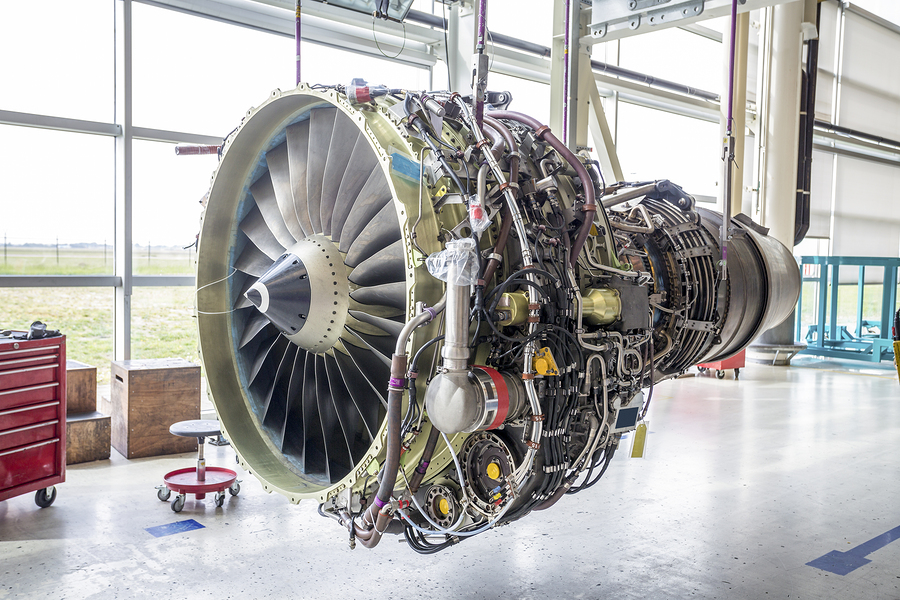
Finding the right project
A good prospect for a project aircraft is one with a sound structure, no corrosion or significant damage, and a good maintenance history. A project will take time, so those in the market will want to judge how much time their projects will require compared with how much time they have before they want or will need to fly in their new acquisitions. Of course, interiors are less concerning as it’s relatively easy and quite common to replace carpeting, seats, as well as other features and décor.
 On the other hand, for jets that are not airworthy, buyers will need to negotiate “as-is” sales subject to engine bore inspections, logbook and maintenance research, as well as inspecting for other common issues. Would-be buyers should also research the particular models that catch their interest for any known manufacturing or performance problems.
On the other hand, for jets that are not airworthy, buyers will need to negotiate “as-is” sales subject to engine bore inspections, logbook and maintenance research, as well as inspecting for other common issues. Would-be buyers should also research the particular models that catch their interest for any known manufacturing or performance problems.
If you’re considering taking on a project, it’s very important you estimate the potential costs of getting your project craft into the operational state and condition you desire. It’s easy to get in over your head if you’re not careful as you can quickly become upside down in your financing. The key is to work with someone familiar with preowned jets, their potential problems, negotiating points and deal breakers, as well as financing options.
If you find the right project craft, you can save money while obtaining a personalized jet that will fit your needs and desires. If the project process sounds like more than you want to deal with or you’re dealing with time constraints or other issues, a project craft may not be the best option for you. Especially if you are a first-time buyer, a new or preowned jet ready for flight might be a better fit. Whichever path you take, make sure you work with a knowledgeable professional who can help you navigate the sometimes complicated and confusing purchasing process to ensure you make a well-informed decision.
The expert jet brokers at L & L International are here to help you acquire the perfect jet.
Need to sell your jet? We can assist with that, too. Contact the private aviation professionals online, at sales@L-Lint.com, or at +1 (305) 754-3313.
[/et_pb_text][/et_pb_column][et_pb_column type=”1_4″][et_pb_sidebar orientation=”right” area=”sidebar-1″ background_layout=”light” remove_border=”off” show_border=”on” /][/et_pb_column][/et_pb_row][/et_pb_section]
[et_pb_section bb_built=”1″ fullwidth=”on” specialty=”off” background_image=”https://www.l-lint.com/wp-content/uploads/2016/03/slider_1_1.jpg” transparent_background=”off” allow_player_pause=”off” inner_shadow=”off” parallax=”off” parallax_method=”off” padding_mobile=”off” make_fullwidth=”off” use_custom_width=”off” width_unit=”on” make_equal=”off” use_custom_gutter=”off” custom_padding_tablet=”50px|0|50px|0″ custom_padding_last_edited=”on|desktop”][et_pb_fullwidth_header title=”CORPORATE JET INSIDER” background_layout=”light” text_orientation=”center” header_fullscreen=”off” header_scroll_down=”off” background_url=”https://www.l-lint.com/wp-content/uploads/2016/03/slider_1_1.jpg” background_overlay_color=”rgba(255,255,255,0.82)” parallax=”off” parallax_method=”off” content_orientation=”center” image_orientation=”center” custom_button_one=”off” button_one_letter_spacing=”0″ button_one_use_icon=”default” button_one_icon_placement=”right” button_one_on_hover=”on” button_one_letter_spacing_hover=”0″ custom_button_two=”off” button_two_letter_spacing=”0″ button_two_use_icon=”default” button_two_icon_placement=”right” button_two_on_hover=”on” button_two_letter_spacing_hover=”0″ background_image=”https://www.l-lint.com/wp-content/uploads/2016/03/slider_1_1.jpg” /][/et_pb_section][et_pb_section bb_built=”1″ admin_label=”section”][et_pb_row admin_label=”row” background_position=”top_left” background_repeat=”repeat” background_size=”initial”][et_pb_column type=”3_4″][et_pb_post_title title=”on” meta=”on” author=”off” date=”on” categories=”on” comments=”off” featured_image=”off” featured_placement=”below” parallax_effect=”on” parallax_method=”on” text_orientation=”left” text_color=”dark” text_background=”off” text_bg_color=”rgba(255,255,255,0.9)” module_bg_color=”rgba(255,255,255,0)” title_all_caps=”off” use_border_color=”off” border_color=”#ffffff” border_style=”solid” background_color=”rgba(255,255,255,0)” parallax=”on” /][et_pb_text background_layout=”light” _builder_version=”3.0.85″]
 Although some view private jet use as a frivolous perk for wealthy executives in large enterprises, the reality is much different. In today’s fast-paced global business environment, time is money. Commercial travel can be a big time sink, and private jet travel for business purposes saves time by flying executives directly to meeting locations — without them having to deal with baggage, security lines, and boarding wait times. Most business jets also offer internet and communications technologies that allow executives to be productive during flight. With so many benefits, what should existing jet owners and those looking at acquiring their own aircraft be aware of in today’s business aviation environment?
Although some view private jet use as a frivolous perk for wealthy executives in large enterprises, the reality is much different. In today’s fast-paced global business environment, time is money. Commercial travel can be a big time sink, and private jet travel for business purposes saves time by flying executives directly to meeting locations — without them having to deal with baggage, security lines, and boarding wait times. Most business jets also offer internet and communications technologies that allow executives to be productive during flight. With so many benefits, what should existing jet owners and those looking at acquiring their own aircraft be aware of in today’s business aviation environment?
The state of business aviation
Experts agree: The business of BizAv is looking bright. Economic conditions are strong indicators of the strength of business aviation. As the global economy continues its upward trend and stock markets surge, business aviation looks to be continuing its recovery from the 2008 recession. The fact that recent tax changes allow businesses to write off 100% of the cost of business jets will likely mean more sales of new and preowned aircraft in 2018, of which a large inventory still exists for purchase.
Industry insiders also expect charter flight numbers to soar along with membership programs, jet cards, and fractional ownership, which open up the wonders of private flight to those previously excluded. This is good for business aviation in general because it brings new customers into the pipeline who may become future owners. As they say, once you experience the benefits of private aviation, you never want to go back to the hassles of commercial flight.
Business aviation trends
Continuing economic improvements should see new jet sales pick up during the next 12 months. Demand will likely soon lead to preowned inventory depletion through purchase or retirement, and manufacturers are prepared with many new models coming down the pike.
As airlines continue to reduce the number of services they provide as well as increase security regulations and wait times, more passengers will be primed to dump commercial flight stresses. Alternative methods of ownership are also expected to continue rapid growth as aviation companies come up with innovative new ways to make jet travel more attainable to a larger population.
 In addition, new technologies and regulations are making jet travel safer than ever before as well as more comfortable. Internet connectivity is no longer a perk but rather a necessity for making the private jet experience more productive for business travelers.
In addition, new technologies and regulations are making jet travel safer than ever before as well as more comfortable. Internet connectivity is no longer a perk but rather a necessity for making the private jet experience more productive for business travelers.
Staying on top of the trends in private and business aviation is important for both existing owners as well as individuals and corporation leaders considering purchasing. It’s important you understand your purchasing options from new to preowned and other access methods, including charters and membership programs. Staying on top of market conditions, operating costs, regulatory compliance issues, and technological advancements can help you choose an appropriate model to meet your needs at an affordable price and ensure private jet travel will remain available to you for many years to come.
Buying a business jet in today’s market while considering all the other factors involved in making a financially sound choice can be daunting. That’s why working with a professional consultant is not simply a convenience. It’s a necessity.
The expert jet brokers at L & L International are here to help you acquire the perfect jet.
Need to sell your jet? We can assist with that, too. Contact the private aviation professionals online, at sales@L-Lint.com, or at +1 (305) 754-3313.
[/et_pb_text][/et_pb_column][et_pb_column type=”1_4″][et_pb_sidebar orientation=”right” area=”sidebar-1″ background_layout=”light” remove_border=”off” show_border=”on” /][/et_pb_column][/et_pb_row][/et_pb_section]
[et_pb_section bb_built=”1″ fullwidth=”on” specialty=”off” background_image=”https://www.l-lint.com/wp-content/uploads/2016/03/slider_1_1.jpg” transparent_background=”off” allow_player_pause=”off” inner_shadow=”off” parallax=”off” parallax_method=”off” padding_mobile=”off” make_fullwidth=”off” use_custom_width=”off” width_unit=”on” make_equal=”off” use_custom_gutter=”off” custom_padding_tablet=”50px|0|50px|0″ custom_padding_last_edited=”on|desktop”][et_pb_fullwidth_header title=”CORPORATE JET INSIDER” background_layout=”light” text_orientation=”center” header_fullscreen=”off” header_scroll_down=”off” background_url=”https://www.l-lint.com/wp-content/uploads/2016/03/slider_1_1.jpg” background_overlay_color=”rgba(255,255,255,0.82)” parallax=”off” parallax_method=”off” content_orientation=”center” image_orientation=”center” custom_button_one=”off” button_one_letter_spacing=”0″ button_one_use_icon=”default” button_one_icon_placement=”right” button_one_on_hover=”on” button_one_letter_spacing_hover=”0″ custom_button_two=”off” button_two_letter_spacing=”0″ button_two_use_icon=”default” button_two_icon_placement=”right” button_two_on_hover=”on” button_two_letter_spacing_hover=”0″ background_image=”https://www.l-lint.com/wp-content/uploads/2016/03/slider_1_1.jpg”]
[/et_pb_fullwidth_header][/et_pb_section][et_pb_section bb_built=”1″ admin_label=”section”][et_pb_row admin_label=”row” background_position=”top_left” background_repeat=”repeat” background_size=”initial”][et_pb_column type=”3_4″][et_pb_post_title title=”on” meta=”on” author=”off” date=”on” categories=”on” comments=”off” featured_image=”off” featured_placement=”below” parallax_effect=”on” parallax_method=”on” text_orientation=”left” text_color=”dark” text_background=”off” text_bg_color=”rgba(255,255,255,0.9)” module_bg_color=”rgba(255,255,255,0)” title_all_caps=”off” use_border_color=”off” border_color=”#ffffff” border_style=”solid” _builder_version=”3.0.85″ background_color=”rgba(255,255,255,0)” /][et_pb_text background_layout=”light” _builder_version=”3.0.85″]
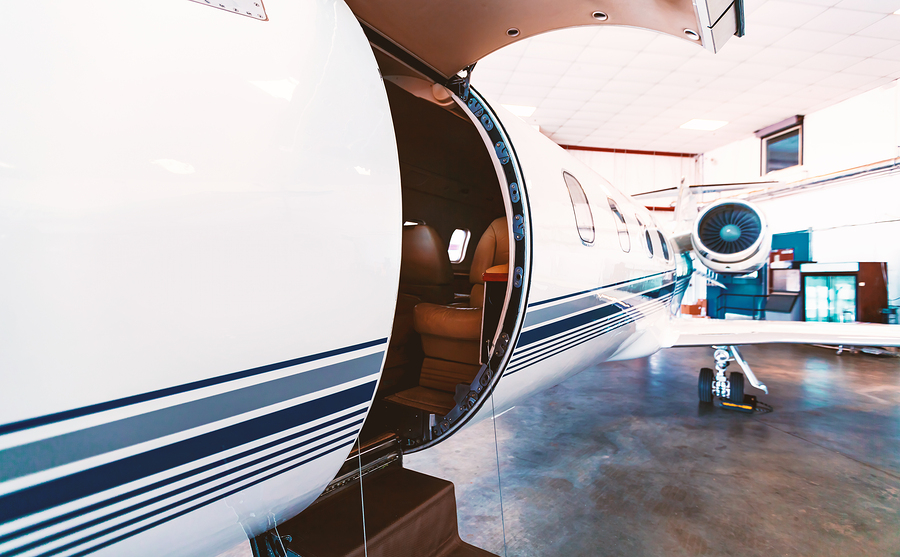
Are you in the market for a new private or business jet? If you’ve purchased an aircraft in the past, you know it’s a complicated, time-consuming process. You don’t just stroll into the nearest dealership, sign some papers, offer a handshake, and walk out as a new jet owner. Those looking to acquire jets have numerous decisions to consider, such as ownership type, whether to purchase new or used, various usage requirements, and more. If you’re thinking of your next jet purchase as a DIY project, however, you’re likely to get in trouble. There are a few mistakes and pitfalls inexperienced jet buyers should look out for.
 Don’t let nonexperts sway your decision
Don’t let nonexperts sway your decision
You wouldn’t purchase a new car based on the advice of your aunt’s next-door neighbor. Well, you might, but you’ll also likely regret it. A station wagon with room for four kids and a dog might be perfect for her, but you were looking for something a bit sportier. The same goes for buying a private or business jet. Your friend may love his large-cabin Gulfstream, but you fly mostly short business jaunts with three or four passengers. Without considering your needs and consulting with an expert, you may wind up with something that doesn’t haul enough cargo or passengers, requires too many fuel stops, or has unnecessarily high operating costs.
Consider your purchasing options
Will you buy new or pre-owned? Too many buyers believe that, if you’re going to purchase a jet, you might as well get the newest model. New might be the best way to go in some cases, but you’ll pay a higher price and you may not be able to get your hands on it for a couple of years. However, new jets typically come with a five-year tip-to-tail warranty.
Acquiring a pre-owned jet can mean getting a good bargain. Just remember that retrofitting and ensuring your new-to-you aircraft meets FAA regulations can be expensive and time-consuming as well. Keep your options open and conduct diligent research to get the most value out of your purchase.
Understand sales tax implications
 It usually takes an expert to unravel all the regulations, exemptions, loopholes, international rules, as well as other purchase and use considerations. It makes a difference where you buy, when and where your jet is delivered, where you fly, who is managing your aircraft, and so much more. And tax laws change all the time, so you need — or, better yet, your consultant needs — to stay current. You don’t want to be surprised when the IRS comes knocking.
It usually takes an expert to unravel all the regulations, exemptions, loopholes, international rules, as well as other purchase and use considerations. It makes a difference where you buy, when and where your jet is delivered, where you fly, who is managing your aircraft, and so much more. And tax laws change all the time, so you need — or, better yet, your consultant needs — to stay current. You don’t want to be surprised when the IRS comes knocking.
Get a pre-buy inspection
Invest a bit of time and money to ensure the aircraft you’re considering has no major maintenance or safety issues. Work with a trusted, licensed mechanic to inspect for issues so you’re not hit with millions in expenses after a short while in the air. If your mechanic finds any problems, your consultant may be able to use these as bargaining chips to negotiate a better purchase price.
Remember that buying a jet is not a money-making asset. Your jet will depreciate and drop in value over time. However, savvy jet owners agree purchasing a private or business aircraft offers many benefits, making it a worthwhile investment for those who do their due diligence.
[/et_pb_text][/et_pb_column][et_pb_column type=”1_4″][et_pb_sidebar orientation=”right” area=”sidebar-1″ background_layout=”light” remove_border=”off” show_border=”on”]
[/et_pb_sidebar][/et_pb_column][/et_pb_row][/et_pb_section]
It’s the start of a new year and, traditionally, time for holding tight to resolutions and making predictions for the year ahead. In that spirit, we resolve to make our best predictions for the private and business aviation industry based on trends, past occurrences, and expert opinions for 2018.
The Tax Cuts and Jobs Act will provide a boost for private and business aviation. The recently approved tax overhaul is good news for business aviation as the biggest benefit is new owners’ abilities to depreciate jets 100% during the first year of ownership — as opposed to five years — which should also increase demand. The provision applies to both new and pre-owned aircraft. Tax breaks for individuals and private corporations may also spur interest in aircraft purchases.
However, it’s not all good news. The bill also repeals like-kind exchanges, although the depreciation provision will basically offset the change. And a one-time repatriation tax may cause leaders of multinational companies to delay purchasing business aircraft until next year. This could play into the overarching prediction that deliveries of private jets will remain flat in 2018.
The business jet market will be slow to recover. Despite the so-called “Trump Bump” insiders expected with the new administration and tax overhaul, financial experts predict that aircraft sales will remain stagnant in the near term and that 2018 will be a “reset” year for the market. According to the AINonline article, UBS Global Research forecasters stated that, “The manufacturers appear to be planning for flat industry deliveries in 2018 with new model introductions—Cessna Citation Longitude, Gulfstream G500 and Bombardier Global 7000—offsetting declines in certain older legacy products.” This means Bombardier, Gulfstream, and Textron should see increased deliveries in 2018 while Dassault and Embraer Executive Jets will likely see fewer.
 FAA oversight will likely heighten. Illegal charter operations — most commonly operating on-demand charter flights without proper Part 135 certification — is a growing problem, and the National Air Transportation Association (NATA) wants the Federal Aviation Association (FAA) to crack down. The FAA has historically weakened or heightened its regulatory enforcement according to events and pressures from the pubic or aviation organizations. In calling for greater enforcement, NATA reiterated its position that incidents involving illegal charter operators “mar” the general aviation safety record. In recent years, the FAA has tended to let operators find and correct their own problems. However, with pressure from NATA, FAA enforcement policies could be on the upswing.
FAA oversight will likely heighten. Illegal charter operations — most commonly operating on-demand charter flights without proper Part 135 certification — is a growing problem, and the National Air Transportation Association (NATA) wants the Federal Aviation Association (FAA) to crack down. The FAA has historically weakened or heightened its regulatory enforcement according to events and pressures from the pubic or aviation organizations. In calling for greater enforcement, NATA reiterated its position that incidents involving illegal charter operators “mar” the general aviation safety record. In recent years, the FAA has tended to let operators find and correct their own problems. However, with pressure from NATA, FAA enforcement policies could be on the upswing.
New technologies will allow for new product innovations. The FAA has loosened its stance and now allows lower-cost electronics inside cockpits, paving the way for advanced product developments and upgrades for older jets. Smaller head-up displays (HUDs) will allow for their placement in smaller aircraft, thus enhancing their safety, and advancements in sensor technologies will allow pilots to see through thick fog. Other advancements, such as high-speed Ka-band connectivity, will allow passengers enhanced internet connectivity while traveling.
It’s difficult to know whether tax cuts will be enough to boost aircraft sales, but combined with low prices on new and used private and business jets, sales should begin to pick up and really gain momentum going into 2019. In addition, constant technology advancements are sure to offer better and safer flight experiences. With so much to look forward to in the aviation industry this year, isn’t it time you got on board?
Business aviation activities increased in September 5.2% over a year ago, according to TraqPak data from Argus International. Much of that increase is due to charter flight activity, which increased 11.8%. So, what is the draw of charter flight for private and business use — and how can you ensure the best flight experience for your situation?
Why fly charter?
More business leaders are recognizing the business value of private jet travel, and many own their own private jets. While some may face financial and logistical barriers on their way to full ownership, there is an alternative: charter jet travel. Charter travel, essentially renting a jet when and where you need it, is another way to enjoy private jet benefits without the hassles and expenses of ownership.
When you fly on a charter, you avoid all the inconveniences and wasted time of commercial flight. You schedule a particular jet to a specified destination. You get to choose the appropriate jet according to your unique needs for the number of passengers; purpose, whether business or pleasure; and choose the amenities that best fit your price range. And even if you already own a jet, there are times you might want to consider using a charter service, for example, when your jet is undergoing maintenance, upgrades, or refurbishments, or isn’t a good fit for a situation. It’s also a great option for jet owners whose private or business aircraft are already booked by another company executive or being used by a family member for a different trip.
Things to consider
 To optimize your charter experience, whenever possible, charter your flight well in advance to ensure a suitable jet or flight is available. Before booking, consider the following questions:
To optimize your charter experience, whenever possible, charter your flight well in advance to ensure a suitable jet or flight is available. Before booking, consider the following questions:
- Are you booking an entire jet or a seat on a jet? If it’s just you or a small group and you can be flexible, booking a seat is often a good option.
- What are the details of your planned flight? What is the destination? Is it a one-way or round trip? Do you need to adhere to scheduled dates or can you be flexible? How many passengers will the jet need to accommodate?
- Do you have aircraft type or seating preferences?
- What amenities and special requirements do you have? Do you need office or meeting space, in-flight connectivity, or relaxation areas? Do you require medical assistance or special accommodations for children, pets, or unusual baggage?
Asking yourself these questions before booking a charter helps to ensure you are looking for — and book — the best deal for your specific situation.

Mistakes to avoid
To help ensure a positive flight experience, here are a few tips that can help flyers avoid charter issues:
- If your flight is crucial, is your seat is guaranteed once you book it?
- If you are booking a seat on a charter, are the parties legal and do they have proper FAA certification to sell individual seats?
- Is the jet guaranteed to depart and arrive on time — or can the charter operator add stops to accommodate passengers to fill the jet?
- Will you really be flying private or can the operator fill seats?
Booking a charter is much more than simply picking up a phone. There is a lot to consider for an optimal experience — and avoiding pitfalls. One of the best ways to ensure charter success is to work with a reliable charter operator.
Imagine a flight experience that lets you book arrivals and departures that work around your schedule; allows you to personalize your flight with unique choices in food and drink, entertainment, or office amenities; and doesn’t involve baggage claim, flight delays, or long security lines. If you’re a seasoned jet traveler, you probably can’t imagine any other flight experience. And you’re willing to pay for it.
In the early days of private jet travel, the only way to experience its luxury was to own your own jet or be employed by someone who did. Then the charter industry brought that experience to a slightly less wealthy tier of people. These days, you have several options for enjoying the perks and benefits of private jet travel that don’t require the cost of full ownership.
Book a charter
A common way to begin experiencing private jet travel is through private charter, in which you basically rent a jet by booking and paying for a specific flight on a specific jet. Charter flights allow you to get closer to your destination more quickly; thus, letting you spend less time travelling and more time at your destination.
While many charter flights have rates between $500 to $2,000 per hour, some aircraft “could be $8,000 per hour or more.” Not terrible for short jaunts, but an overseas flight could set you back a hundred thousand dollars or more. The good news: That price is for the jet, which could hold one person or 20. Spread this out over the number of passengers, and the overall price of charter flights — though not cheap — is more affordable.
When you think about a business executive’s valuable time, the efficiencies of jet travel are often well worth the price of a charter. And because you are paying for the flight, the provider will typically be open to providing any requested amenities such as Wi-Fi, conference rooms, pet accommodations, or specific foods, décor, and entertainment. And with so many charter companies around, you won’t find it difficult to find the right plane at the right price for the right time. Charter flights are usually great options for those who travel infrequently. For those who travel by air often, fractional ownership may be a more economical choice.
Own a fraction
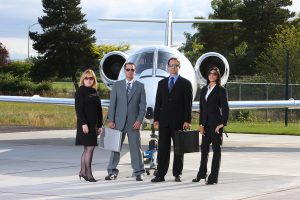 Fractional jet ownership is another option for jet travel without the hefty price tag of full ownership. Fractional jet ownership is like buying into a timeshare luxury condo: For a set price, you have part ownership and get to use it a certain number of days per year or, in the case of a jet, a certain number of flight hours.
Fractional jet ownership is another option for jet travel without the hefty price tag of full ownership. Fractional jet ownership is like buying into a timeshare luxury condo: For a set price, you have part ownership and get to use it a certain number of days per year or, in the case of a jet, a certain number of flight hours.
One difference is that you aren’t buying a portion of one jet but, rather, a portion of a fleet, which contributes to flight availability. All the part owners share in staffing, insurance, and maintenance costs. Fractional ownership is most appropriate for people who travel more than 50 hours per year and need flexibility because of busy and unpredictable schedules. Depending on the type of jet and share you buy, costs can vary significantly. Typically, a one-sixteenth share will give you 50 hours of flying annually. Share owners can typically sell back their unused shares at the end of their contract terms and can also share in depreciation tax advantages.
Play your cards right
 Jet cards offer the opportunity to pre-purchase flight hours. You purchase a certain number of hours on a particular size and type of jet that fits your needs. The hourly rate is fixed for the term of the card, usually one to two years. By buying in bulk and for a static rate, you get a discounted rate over options such as private charter. Before purchasing a card, though, make sure you will be flying enough hours to make it economical. Unlike purchasing shares of a jet, you don’t get to participate in any tax advantages.
Jet cards offer the opportunity to pre-purchase flight hours. You purchase a certain number of hours on a particular size and type of jet that fits your needs. The hourly rate is fixed for the term of the card, usually one to two years. By buying in bulk and for a static rate, you get a discounted rate over options such as private charter. Before purchasing a card, though, make sure you will be flying enough hours to make it economical. Unlike purchasing shares of a jet, you don’t get to participate in any tax advantages.
Share a seat
With the above options for private jet flights, there will be times when your flights have empty seats — or even empty legs. If you could sell some of those seats or trips, you could recoup some of the upfront flight costs. Well, there’s an app for that! If you have extra seats on your booked charter you’d like to sell, there are apps available to facilitate the process. Or you might use empty seats as perks for your employees, friends or family. Seat-sharing simply helps make private flying more cost-effective by making use of empty seats on already-paid-for flights.
Of course, the ideal situation for those who can afford it is to purchase a private jet outright. With your own private jet, you have all the luxury and convenience of private air travel at your fingertips to wherever you want, whenever you want, along with the associated tax advantages of ownership. But for those who can’t afford the $3 to $90 million price tag, it’s good to know your alternate options. Which one you choose will depend on how flexible you are, how often you fly and how much you want to spend. It’s always a good idea to enlist the help of a jet broker or consultant to explore your options.
Individuals or corporate leaders looking to purchase private jets have a big decision to make: forward or retro. Are you looking to purchase a new aircraft or a used model and retrofit it to meet regulatory mandates as well as your needs? Or, if you already own a jet and want to upgrade, is it better to take the plunge with a new aircraft or save money by retrofitting your current one?
According to a report by the Aircraft Electronics Association (AEA), avionics sales for business and general aviation were up 2.7% year-over-year in the first 6 months of 2017. AEA President Paula Derks stated, “It’s encouraging to see a positive increase in year-over-year sales for two straight quarters, something we haven’t experienced since 2014.”
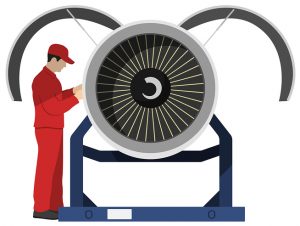
The interesting part of the report is that the increase is not due to new aircraft forward-fits or avionics systems for new jets. Of the $1.145 billion in avionics sales, 56.2% was for retrofits in existing aircraft and 43.8% for forward-fit installs. This speaks to the surging market for retrofit equipment aimed at used aircraft compared with sales related to new jets.
Why the retrofit surge?
There are several reasons for the increased popularity of preowned jets and retrofit avionics and equipment. In fact, the biggest competition for new jet sales could be preowned jets ripe for avionics, power, and performance upgrades.
Many jet owners today are retrofitting because of the mandate to implement ADS-B solutions by the January 2020 deadline. And the AEA is urging aircraft owners not to postpone their upgrades to the last minute as there are a finite number of shops and installers to perform the upgrades. In addition to the ADS-B deadline, a more permissive policy for installing non-certified equipment to improve safety in certified aircraft can be partially responsible for the uptick in retrofits.
 Yet another reason is that an oversupply of second-hand jets makes it a buyer’s market, which is obviously not good news for aircraft manufacturers and sellers. Private and business jet insiders say now is a great time to buy preowned private jets because they deliver much of the same efficiencies, capabilities, and luxuries at a fraction of the cost of new aircraft. This is also good incentive for owners to hold on to and refurbish their current jets.
Yet another reason is that an oversupply of second-hand jets makes it a buyer’s market, which is obviously not good news for aircraft manufacturers and sellers. Private and business jet insiders say now is a great time to buy preowned private jets because they deliver much of the same efficiencies, capabilities, and luxuries at a fraction of the cost of new aircraft. This is also good incentive for owners to hold on to and refurbish their current jets.
The retrofit market
Whether it’s refurbishing for style and comfort or upgrading avionics for safety and navigation improvements, the retrofit market is hot. This is good news for private and business jet owners looking to upgrade their flight experiences. Whether you’re looking to purchase and retrofit a preowned jet or want to update your oldie but goodie for increased safety and comfort, the time is right for making what’s old new again.
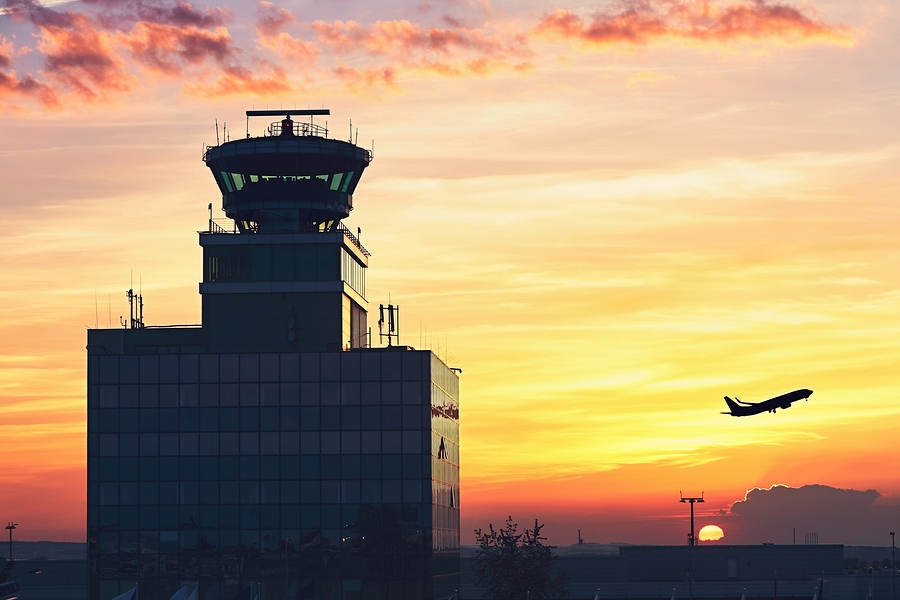

 The cost of not upgrading may be just as steep. Without being ADS-B compliant, aircraft will not be allowed to fly in controlled airspace. This puts a damper on many aircraft and their capabilities. If jets need to fly into this airspace regularly, the owners face a difficult choice: upgrade or retire.
The cost of not upgrading may be just as steep. Without being ADS-B compliant, aircraft will not be allowed to fly in controlled airspace. This puts a damper on many aircraft and their capabilities. If jets need to fly into this airspace regularly, the owners face a difficult choice: upgrade or retire.

 The typical flight crew is an FAA-licensed pilot and at least one cabin attendant, sometimes more, depending on flight duration.
The typical flight crew is an FAA-licensed pilot and at least one cabin attendant, sometimes more, depending on flight duration.

 In addition to SAJF interest from big names in business and private jets, NASA has conducted
In addition to SAJF interest from big names in business and private jets, NASA has conducted 




 Don’t let nonexperts sway your decision
Don’t let nonexperts sway your decision





